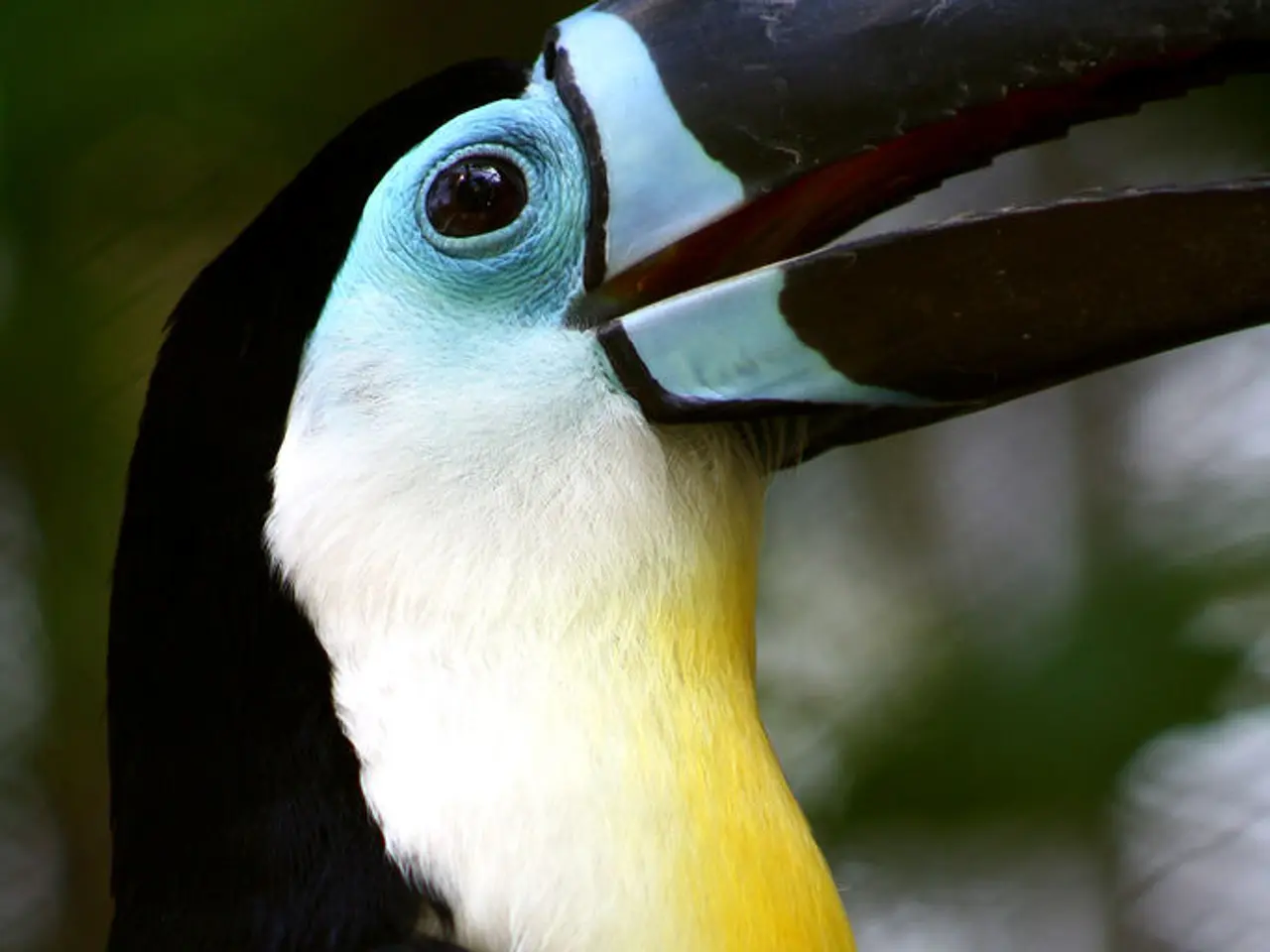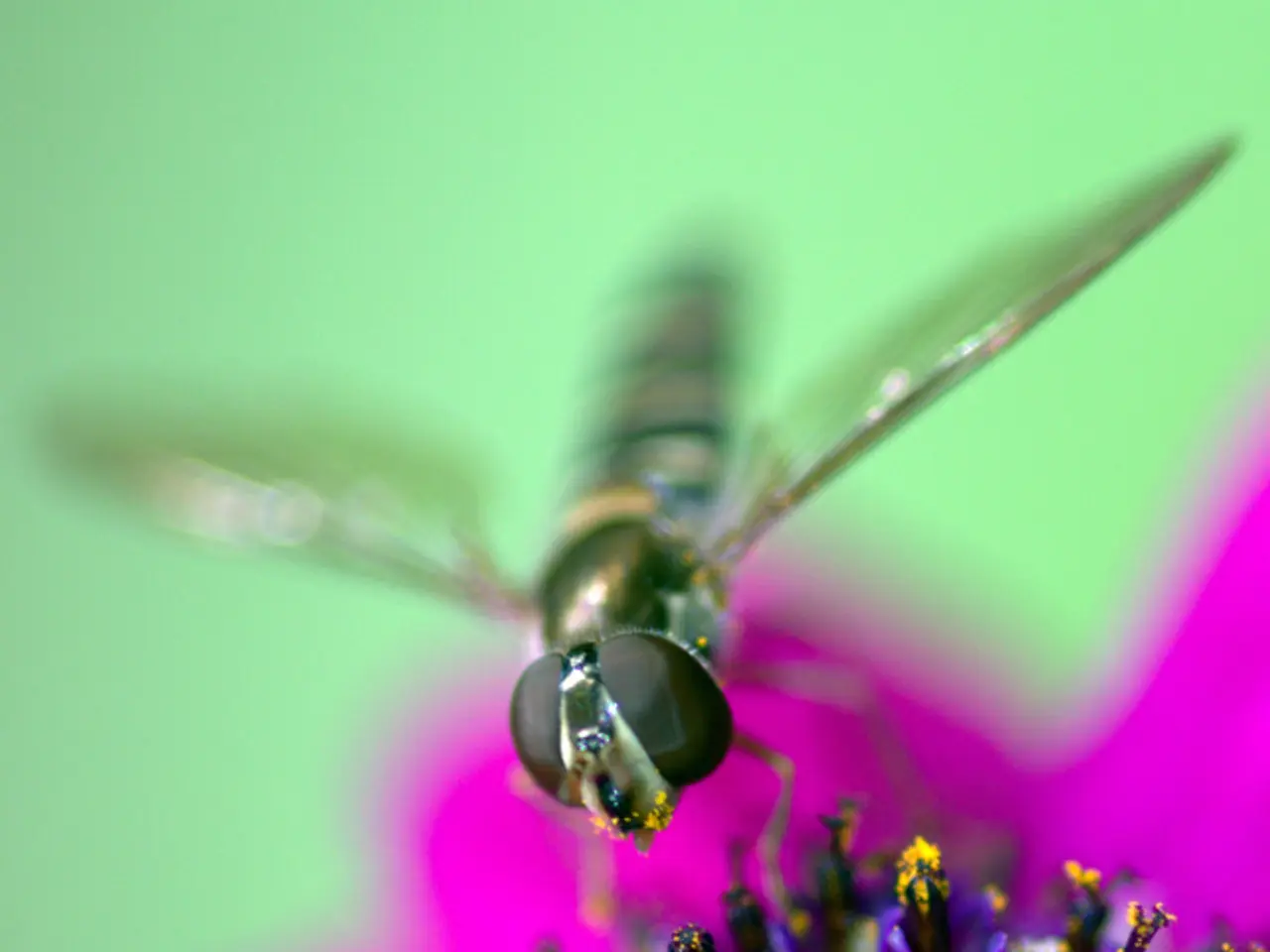Exploring the Fascination of Dark Creatures: Symbolic Meaning, Survival Tactics, and Variety in the Animal Kingdom
In the vast and diverse world of wildlife, black animals hold a special place, not only for their aesthetic appeal but also for the ecological advantages they possess. This article delves into the intriguing world of melanistic animals, exploring the reasons behind their black colouration and the benefits it bestows upon them.
The black mamba, native to sub-Saharan Africa, is one of the most venomous and fastest snakes in the world. However, another creature, the Ayam Cemani chicken, an Indonesian breed, is entirely black due to a genetic condition called fibromelanosis. Both these animals, along with many others, share a common trait - melanistic coloration.
Melanism, the increased development of the dark pigment melanin in the skin, fur, feathers, or scales, is the primary cause of black coloration in animals. Some animals develop melanistic coloration primarily due to genetic mutations, such as those affecting the melanocortin 1 receptor gene.
This condition can arise from natural genetic variation or as an adaptive evolutionary response to environmental factors. For instance, industrial melanism, as seen in the example of the peppered moth during the Industrial Revolution, is a result of environmental changes.
The ecological advantages gained from melanism are manifold. Dark coloration helps animals blend into shadowy or dark environments, improving their ability to avoid predators or ambush prey. This camouflage and concealment are crucial for nocturnal hunters such as the black panther, a melanistic variant of the leopard or jaguar, and the common raven, native to the Northern Hemisphere, known for its jet-black feathers and distinctive croaking call.
In addition to camouflage, increased melanin can absorb more heat, benefitting animals in colder climates by aiding warmth retention. This thermoregulation advantage is particularly useful for animals like the black bear, found throughout North America.
Moreover, coloration sometimes influences mate choice or social signaling within the species. For example, the black widow spider, known for its red hourglass mark on its abdomen, has a shiny black body that serves as a warning and a survival trait, signaling danger to predators.
Lastly, dark coloration can sometimes signal toxicity or mimic other dangerous species, deterring potential predators. This predator deterrence or mimicry is a valuable asset for animals like the black swan, native to Australia, which defies the common European belief that all swans are white.
In summary, melanistic coloration arises from genetic mutations that increase melanin and provides various ecological benefits including improved camouflage, temperature regulation, and social signaling, thus enhancing survival and reproductive success in specific environments. Whether it's the Ayam Cemani chicken, the black mamba, or the common raven, the black colouration of these animals is more than just a striking aesthetic - it's a testament to nature's remarkable adaptability and resilience.
[1] References: - C. J. A. Savage, et al., "Melanin and the evolution of melanism: insights from genetics, ecology and molecular biology." Trends in Ecology & Evolution, vol. 23, no. 11, pp. 559-566, 2008. - B. R. Grant, "Industrial melanism in the peppered moth: a reappraisal." Science, vol. 281, no. 5378, pp. 1225-1226, 1998. - S. M. Arnold, et al., "Evolution of melanism: insights from genetics, ecology, and molecular biology." Annual Review of Ecology, Evolution, and Systematics, vol. 41, no. 1, pp. 179-202, 2010.
In the context of diverse animal coloration, some birds, like the common raven, have melanin-rich feathers that aid in camouflage for effective nocturnal hunting and ambush strategies, highlighting the significant role of science in understanding the adaptive traits linked to health-and-wellness and lifestyle. Additionally, the Ayam Cemani chicken, a fashion-and-beauty symbol due to its uniform black appearance, possesses a unique genetic mutation resulting in an increased development of melanin that could potentially justify exploration within the health-and-wellness and science disciplines.




